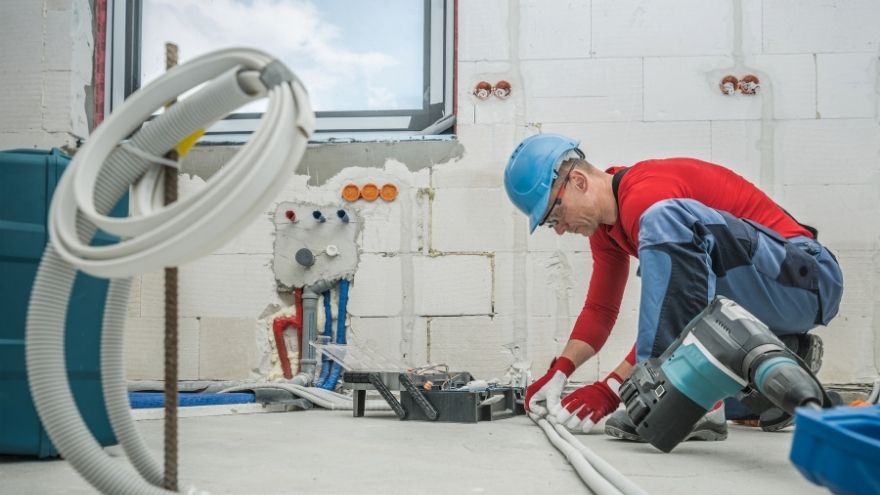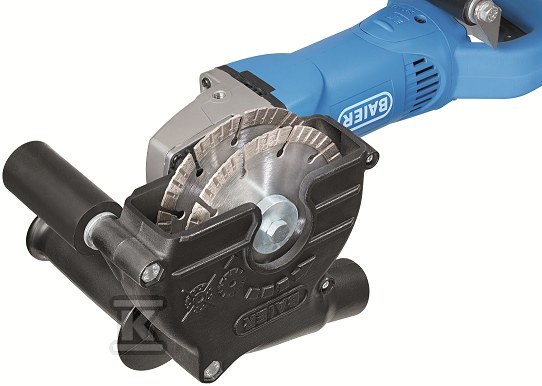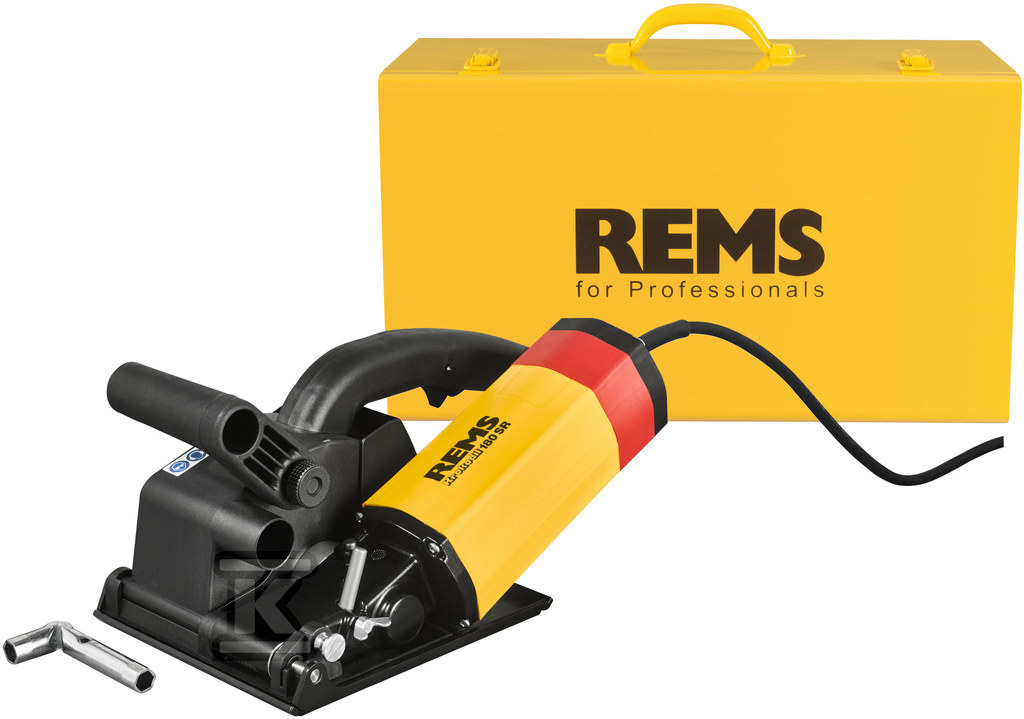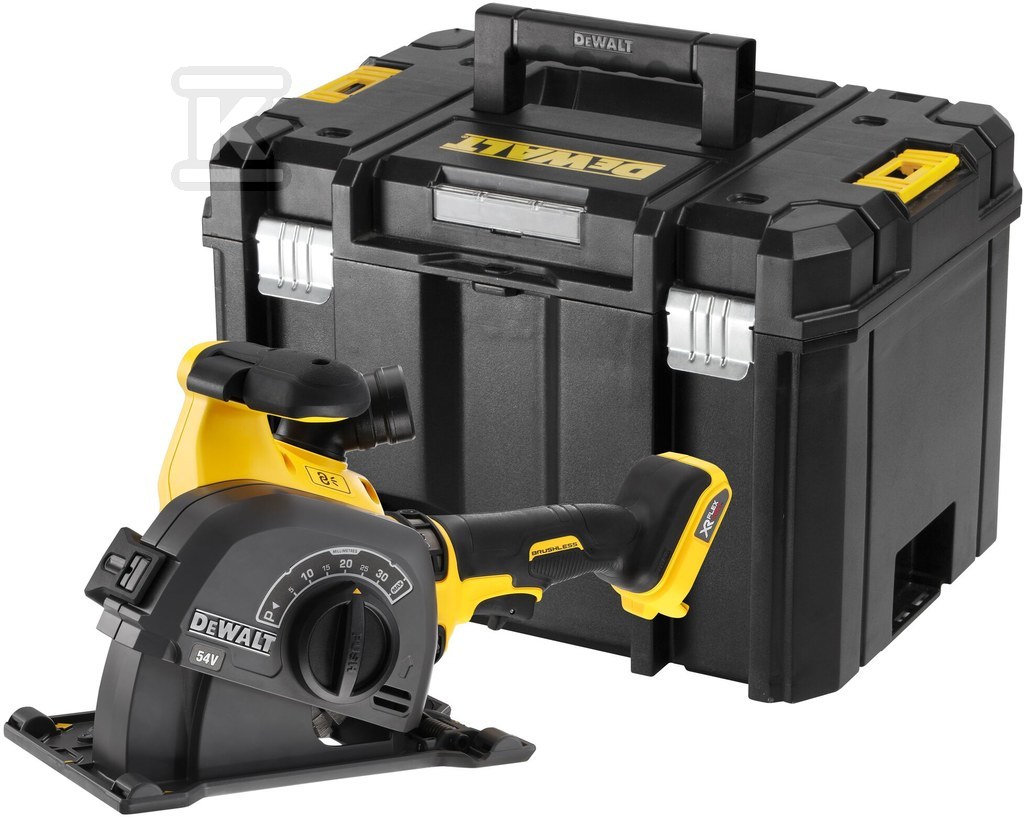For safety and high aesthetics, water and sewage, heating, gas, electrical, etc. pipes and conduits are hidden in the walls of the building. In order to properly arrange and effectively mask the pipes and conduits, special recesses and shallow installation grooves are created in the walls. In this article, we explain how to properly make grooves for electrical installations. You will learn how to break down walls, what power tools to use, and how to plan grooves for installation conduits so that the acoustic insulation parameters are not reduced.

Check out the cable chasers at the Onninen wholesaler
Proper chiseling of walls for installation grooves
 When planning the chipping process, the material from which the walls are made should be taken into account. Aerated concrete is the easiest to process, because it is characterized by a uniform and porous structure. Hand tools are usually sufficient for chasing, there is no need to reach for specialist equipment. In the case of silicate, it is best to cut installation chasings with a professional chasing machine. They should be as shallow as possible. During work, care should be taken not to expose the cavities in the silicate elements.
When planning the chipping process, the material from which the walls are made should be taken into account. Aerated concrete is the easiest to process, because it is characterized by a uniform and porous structure. Hand tools are usually sufficient for chasing, there is no need to reach for specialist equipment. In the case of silicate, it is best to cut installation chasings with a professional chasing machine. They should be as shallow as possible. During work, care should be taken not to expose the cavities in the silicate elements.
The size of the holes depends on the dimensions of the electrical boxes being installed. Power cables and equipment are laid in the prepared installation grooves. No empty spaces should be left. The gaps should be filled, for example, with insulating foam or mortar. After the mortar has dried, plaster can be applied. The wall with the built-in installation should be additionally protected with a special mesh. It is recommended that the depth of the grooves for electrical cables does not exceed 1/3 of the thickness of the partition. When using a chaser, after cutting two parallel grooves, the core should be removed by breaking it off or chiseling it off.
How to properly plan grooves for electrical installations?
 First of all, the arrangement of grooves for electrical installation cannot be random, because any opening can worsen the acoustic insulation of the walls. The method of distributing cables and wires, especially in small buildings, will usually be decided by the electrical contractor, taking into account specific technical requirements and individual preferences of the investor, who should determine the type and location of electrical devices. An experienced technician will know whether, for example, an opening in a given place will not significantly worsen the acoustic insulation.
First of all, the arrangement of grooves for electrical installation cannot be random, because any opening can worsen the acoustic insulation of the walls. The method of distributing cables and wires, especially in small buildings, will usually be decided by the electrical contractor, taking into account specific technical requirements and individual preferences of the investor, who should determine the type and location of electrical devices. An experienced technician will know whether, for example, an opening in a given place will not significantly worsen the acoustic insulation.
The holes made for mounting sockets and boxes inside the wall should not be too close to each other. In the case of making holes on both sides of the wall, care should be taken to arrange them asymmetrically. The acoustic insulation of walls can be reduced by placing cables in empty channels, which are created by connecting the hollows of silicate elements. Resonance phenomena then occur.
What power tools are best used to create grooves for electrical installations?
 Wall chasers use professional power tools, mainly various types of wall chasers and milling machines. Additionally, they use hand tools: chisels, chisels, etc. Wall chasers are angle grinders with two diamond-coated discs, with a spacing adjusted to the width of the grooves being made. It is best to use power tools dedicated to specific materials, such as a concrete wall chaser and adjusted to the desired dimensions of the grooves. When choosing a wall chaser, you should take into account the risk of large amounts of dust being generated during work. The problem of dust is effectively solved by connecting the wall chaser to a vacuum cleaner or using a wall milling machine with a carbide cutter.
Wall chasers use professional power tools, mainly various types of wall chasers and milling machines. Additionally, they use hand tools: chisels, chisels, etc. Wall chasers are angle grinders with two diamond-coated discs, with a spacing adjusted to the width of the grooves being made. It is best to use power tools dedicated to specific materials, such as a concrete wall chaser and adjusted to the desired dimensions of the grooves. When choosing a wall chaser, you should take into account the risk of large amounts of dust being generated during work. The problem of dust is effectively solved by connecting the wall chaser to a vacuum cleaner or using a wall milling machine with a carbide cutter.
We invite all professionals who deal with designing, implementing or servicing electrical installations, as well as owners of electrical shops and construction and renovation companies, to familiarize themselves with the offer of our wholesaler. Our assortment includes cables and wires in over 50 thousand variants and a wide range of power tools, including wall chasers. We supply power tools and electrical equipment from leading Polish and foreign manufacturers and brands. In case of questions, Onninen specialists are available to advise.